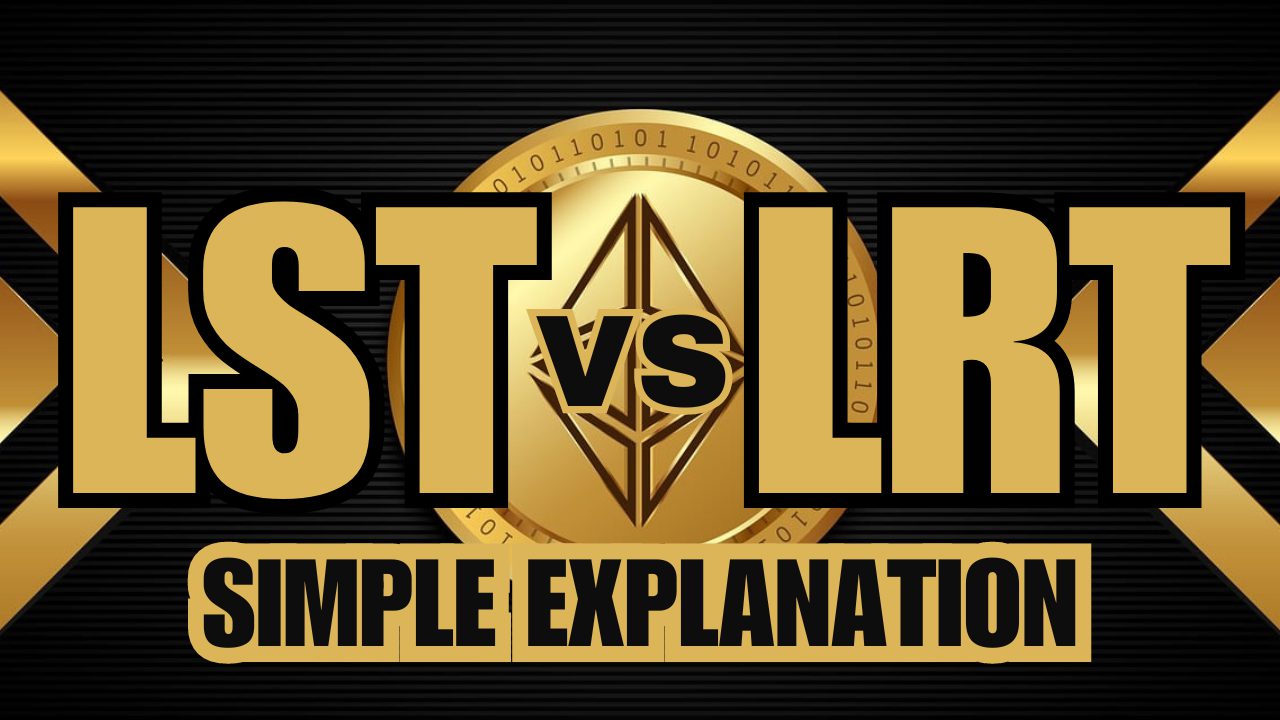
If you recently started venturing the depths of DeFi, you might need help understanding LSTs and LRTs.
In order to describe these intermediate concepts, we need to start at the beginning.
This is a n00b-friendly introduction to liquid staking and liquid restaking.
What is Proof of Stake?
Proof of Stake (PoS) is a consensus mechanism for adding blocks to a blockchain.
When a validator node processes transactions, they earn (a part of) the fees paid for them.
The validator that will process the next block is chosen randomly by the protocol, with the probability being proportional to their “stake”.
A few examples of PoS networks are Ethereum, Solana, Cardano, Cosmos, etc.
What is Staking?
Practically, staking means locking your cryptocurrencies to secure the network and earn rewards in return.
When you stake, you effectively become a validator in the network.
Your stake is a statement that you’ll act in accordance with the protocol rules, as it’s in your best interest.
What is Liquid Staking?
Oftentimes, staking can be quite complex to set up or requires a minimum amount (for example 32 $ETH for Ethereum).
This means that many users of the network won’t be able to stake their holdings.
This is where liquid staking comes into the picture.
Liquid staking protocols allow users to deposit any amount and then collectively stake all deposits on their users’ behalf.
As such, each depositor has a claim to the earned staking rewards, proportional to their share of the staking pool.
A few examples of Liquid Staking projects include Lido, RocketPool, Ankr, etc. You can see them all on DefiLlama, ordered by TVL (total value locked).
What are Liquid Staking Tokens (LSTs)?
When you liquid stake, you get a new token in your address representing your share of the staking pool.
These tokens are always redeemable for the tokens you initially staked.
Some LSTs have a 1:1 peg with the underlying token and you’re getting rewards in your wallet. And some LSTs’ increase in price relative to the underlying token representing the earned yield.
As the LST is an ERC-20 token like any other, you can also use it in DeFi. For example, you can use your liquid staked $ETH to deposit into a lending protocol and borrow against it. Or you can provide liquidity with the LST and earn swap fees on top of the staking rewards.
What is Restaking & EigenLayer?
Restaking is a new primitive in crypto.
In simplest terms, EigenLayer created a way for users to “restake” their liquid staked tokens (LSTs). Restaking allows reuse of the consensus layer and new projects can rely on the restaked Ether to secure their networks. This means that projects building on EigenLayer wouldn’t need their own set of validator nodes, consensus rules, etc.
Note: this is an oversimplification of how EigenLayer works. Refer to their docs if you want to understand the intricate details.
As a holder of staked $ETH (native or liquid), you can restake it on EigenLayer. And as a restaker, of course, you’d earn restaking rewards on top of your staking rewards.
At the time of writing, EigenLayer still doesn’t have a token. They have “points” tracking the duration and amount of each users’ deposit.
What is Liquid Restaking?
As the restaking narrative gained popularity, many liquid restaking providers also emerged.
After reading so far, you might already have an idea what they do.
In summary, a liquid restaking project accepts deposits of LSTs (liquid staked tokens) and restakes them on EigenLayer on behalf of the users. Of course, they take a share of the earned fees, but forward the majority of the yield and EigenLayer points to their users.
A few platforms that enable liquid restaking this are: EtherFi, Renzo Protocol, Swell, etc.
Note: all of these, just like EL, have their own points systems and potential airdrops.
What are Liquid Restaking Tokens (LRTs)?
LRTs are tokens that represent a claim of a user’s deposit in the liquid restaking protocol.
Same as the LSTs or any other ERC-20 token, LRTs can be used in DeFi for lending, borrowing, LPing, or anything else.
Your LRT is a receipt of your restaked amount and you can always burn it to redeem your LSTs from the protocol or trade it in the open market.
Summary – LST vs LRT
LSTs are liquid staking tokens. You deposit $ETH and the protocol stakes it for you.
LRTs are liquid restaking tokens. You deposit $ETH or LSTs and the protocol restakes it for you.
Liquid staking tokens represent your claim on $ETH that’s staked to secure Ethereum.
Liquid restaking tokens represent your claim on staked $ETH that’s restaked in EigenLayer.
Both are offered by independent protocols, so you need to assume and assess the extra layers of risk. You remain the custodian of the liquid tokens, but that’s not a protection against smart contract risks, depegging, exploits, carelessness, or restricted redeemability in the future.
DYOR and tread carefully.
 Husband & Father
Husband & Father  Software Engineer
Software Engineer 















